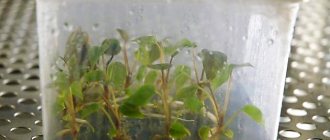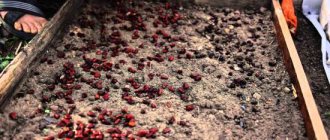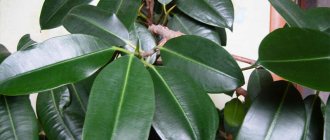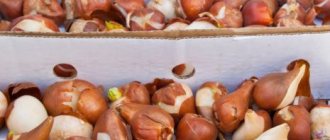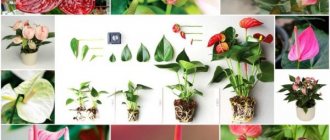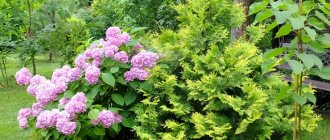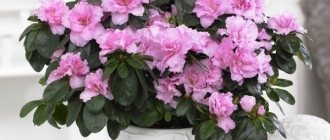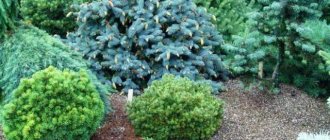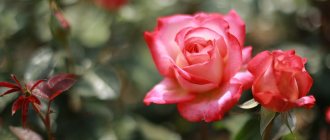- Indoor begonia Elatior: lush flowering almost all year round
- Begonias of the Elatior group: description of plants
- Legendary winter begonia hybrids
- Flowering begonias of the Elatior group
- Begonia varieties Elatior
- Growing conditions for indoor begonias Elatior
- Lighting and placement
- Temperature and ventilation
- Caring for winter begonia at home
- Watering and air humidity
- Top dressing and fertilizer composition
- Pruning and shaping Elatior begonia
- Transplantation, containers and substrate
- Diseases, pests and problems in growing Elatior begonia
- Reproduction of indoor begonia Elatior
- Video: how to grow begonia elatior
Indoor begonia Elatior: lush flowering almost all year round
Among begonias there are many plants that can be grown indoors. But only one has become truly popular - winter begonia Elatior , which is often confused with the species high begonia. Begonia Elatior is grown mainly as an annual, and completely in vain. The magnificent palette of flower colors and the ability to bloom almost all year round without interruption have no analogues. This is not the most undemanding plant, but if you are willing to pay attention to it, it will pleasantly surprise you.
Begonia Elatior: blooms lush almost all year round.
Begonias of the Elatior group: description of plants
The name Elatior begonia is familiar to everyone, but it should not be confused with the specific name. Elatior begonias, which are sold as houseplants, are not at all a variety of tall begonia (Begonia elatior, reclassified as the species Begonia reniformis), but a group or race of hybrid begonias with a complex origin that bears little resemblance to one of the original plants.
This is one of two groups of hybrid varieties of beautifully flowering herbaceous begonias (and completely eclipses competitors from the Lorraine ).
The debate about how to correctly designate elatiors is quite active. Some breeders insist on the formulation Begonia x hiemalis , Begonia x hybrida , Begonia x hybrids subsp. elatior. Others insist on the simple trade name Begonia Elatior Hybrids , Begonia Hybrids , and the formulation Begonia Elatior Rieger is also popular . Most catalogs today prefer not to mention the species name at all. Be that as it may, plants are very easy to recognize.
Winter begonias , begonias of the Elatior group or simply Elatior begonias are compact-sized hybrid begonias that can bloom all year round and are distinguished by fairly large flowers. They are called winter, because no other species is able to delight with abundant flowering in the cloudiest times. But the main advantage of Elatior begonias often goes unnoticed - they are the most resistant to fungal diseases.
Begonia Elatior 'Baladin'.
Reproduction methods
Rooted plants can be purchased in specialized stores. You can go the other way by growing a flower yourself. Begonia can be propagated in two ways:
- sowing seeds;
- rooting cuttings.
What to do with the arrow when the orchid has faded
Growing from seeds
All types of begonia elatior are hybrids, so collecting seeds for propagation is almost impossible. However, now you can find seeds of various varieties of these plants on sale. You need to understand that this method of reproduction is very troublesome and painstaking.
The optimal time for planting is early spring. The seeds are mixed with dry sand and planted in prepared soil. To do this, take 1 part peat, 1 part sand and 2 parts earth. The finished soil is poured into a pot and placed in a tray with warm water.
After the soil has absorbed water and cooled to room temperature, seeds are planted in it. Do not sprinkle the seeds with soil; moisten the soil with water from a spray bottle. You need to make a mini-greenhouse, covering the top with glass or film, maintaining the temperature to +25 ℃ and lighting for 14 hours.
If you follow this care, sprouts will appear in a month. The mini-greenhouse is removable. After a week, no later, the shoots are transplanted into small glasses, and after two months they can be transplanted into pots.
Recommendations for cuttings
This is the most common and convenient option to obtain a young plant. Cuttings are carried out in spring or early summer. By the way, pruning is a good way to rejuvenate the plant.
Recommendations for propagation by cuttings of Begonia elatior:
- You need to choose mature cuttings or stems, as they are more resistant to diseases. For transplantation, a shoot of at least 5 cm is taken.
- For rooting, place them in perlite or vermiculite, which have antibacterial properties.
- Plant the rooted cuttings in small glasses with prepared soil (one part peat and three parts sand).
- Place in a dark place for 2 months, do not allow the soil to dry out, moisten it regularly and ventilate the room.
When propagating by cuttings, in order for the flower to form into a lush and beautiful bush, it must be pinched. This method is more effective than obtaining plants from seeds.
Legendary winter begonia hybrids
With the change in trends in the begonia market in favor of flowering beauties, which began to displace the once dominant decorative foliage species from the shelves, the inimitable Elatior begonia began to invariably appear on the list of the best plants for long and bright flowering.
It blooms almost all year round, without interruption, luxuriantly, offers the brightest color palettes and looks flawless with quite ordinary care. Bushes do not disappear from shelves almost all year round.
Hybrid begonias from the Elatior group are low-growing, compact, herbaceous plants with evergreen leaves. The maximum height of the bushes is limited to a modest 40 cm, although most elatiors are 20-25 cm long, compact and lush plants, more like living bouquets.
Despite the presence of several ampelous varieties with drooping, hanging shoots, most Elatior begonias are bushy and upright.
The green begonias from the Elatior group can hardly be called ugly. They boast larger and more decorative leaves than their main competitors. Reaching a length of up to 8 cm, with jagged edges, the leaves appear flawless - dense, shiny, darkly colored, and look neat, although the foliage of elatiors is as asymmetrical as that of other begonias.
Despite the fact that all elatiors are associated with dark leaves that highlight the color of the inflorescence caps, the shades of green in the leaves differ among different varieties. The usual dark emerald, warmer tones of dark colors, fairly light herbaceous shades or original green color options with a reddish, bronze, brown touch allow you to choose a variety in the same way as according to the palette of flower colors. Purple-leaved begonias Elatior are becoming increasingly popular today.
Flowering begonias of the Elatior group
In all varieties of the Elatior group, the flowers cannot impress with their size, but their beautiful shape and extraordinary quantity fully compensate for this drawback. In addition, the flowers are small only in comparison with other plants, because they are much larger than the flowers of other lush-flowered species - up to 3–5 cm in diameter.
Begonias of the Elatior group have flowers that can be simple, semi-double or densely double. The shape of the latter is often compared to heads of cabbage, although most of all the flowers of individual elatiors resemble mini-roses. Pointed, giving the flowers a star-shaped appearance or rounded, smooth, jagged or wavy, the petals look like living satin.
The color range of the hybrid begonia Elatior includes all shades of the warm spectrum - from white to yellow and pink-red. Bright, acrylic, clean shades seem especially modern. Two-color combinations with a smooth transition from a bright border to the main color are not uncommon, as are varieties in which the buds gradually lighten as they bloom.
Begonia Elatior 'Borias'.
Varieties and varieties
Hybrids of begonia elatior are divided into 3 groups: tall - up to 40 cm, medium-sized - up to 30 cm and low-growing plants. The leaves have an asymmetrical shape, resembling the shape of a heart.
Advantages of Elatior:
- Various colors of flowers
- Long flowering (even in winter)
Baladin
A beautiful, abundantly flowering variety. The shades on the inflorescences of one plant can be varied : from white to pink-red. For this feature, they prefer to give Baladin in pots instead of cut flowers. Medium-sized bush with numerous flower stalks.
Borias
This hybrid was bred in England in the 18th century. The most common variety on our windowsills. Belongs to the low-growing group, has a long flowering period, and is unpretentious in care. The inflorescences have double pink flowers with a white edge.
Annabelle
Winter medium-growing variety. The bush is decorated with milky, yellowish double inflorescences. Flowering period from November to July. It is also grown in open ground: in gardens, parks and cottages.
Azothus
Decorative medium-growing course with large pink flowers. Only grown in pots indoors throughout the year.
Bellona
The begonia bush grows up to 40 cm; it is not grown in open ground due to the difficulty of care. Blooms with bright red flowers.
Charisma F1
A low-growing species of begonia. Grown mainly indoors. The colors of the inflorescences range from light pink to orange-red buds. It has 4 varieties that differ in color shades.
Renaissance
A tall plant, the bush reaches 60 cm. It grows on a windowsill; in open ground it is susceptible to diseases. The color of the buds is bright red, the edges of the inflorescences have a wavy edge.
Kyoto
A shrub up to 30 cm tall, distinguished by lush snow-white flowers. Suitable for growing in pots only.
Mix
This is a medium-sized plant. The leaves are serrated, the flowers are arranged in several tiers. Flowers can be completely different - from red to white.
Begonia varieties Elatior
These amazing hybrid begonias have more than a hundred varieties. Among the begonias of the Elatior group, there is an internal division into ordinary small-flowered varieties and large-flowered hybrids, which are also called Rigen begonias. They are more stable and large-colored, most often terry.
The following varieties have long become true classics for indoor culture:
- dark-leaved pink-red with almost purple leaves 'Grace' ;
- snow-white dark-leaved variety 'White Pearl' ;
- dark-leaved variety with apricot-salmon flowers 'Lax' ;
- double dark pink variety 'Borias' ;
- raspberry variety 'Berseba' ;
- red-orange-yellow watercolor varieties of the 'Bodini' ;
- ampelous semi-double series with clusters at the ends of the shoots 'Cottage Collection' ;
- bright yellow variety 'Nadine' ;
- pink variety 'Sweet Dreams' ;
- semi-double green and white graceful variety 'Clara' .
It is worth choosing varieties purely based on the colors of both flowers and leaves. In catalogs they often remain nameless.
Growing conditions for indoor begonias Elatior
Stable warmth and good soft lighting are all that begonias need for tireless flowering. They are gentle and do not tolerate sudden changes in cultural conditions.
Winter begonias remain primarily indoor plants. But they are increasingly grown for garden purposes - decorating balconies, terraces, potted gardens and even open soil. They are used in urban landscaping and transferred to plots - like plants that bloom for one season. As a perennial, this begonia can only be preserved indoors. But even in the interior it can be thrown away immediately after flowering.
Begonia Elatior 'Berseba'.
Reproduction
The flower is propagated vegetatively - by cuttings, and some varieties - also by seeds .
Stem cuttings
Spring and summer cuttings are used , which have a pair of leaves and two growth buds. The sections are dried.
You can pre-root the cuttings in water, treat the lower cuts with rooting stimulants, or immediately plant them in regular soil with additional sand.
The planting is covered with plastic film, kept warm (+ 22-25ºС ), ventilated and moistened.
After the formation of the root system and the formation of new shoots (within about a month ), the cuttings are planted in separate containers with a regular soil mixture.
Leaf cuttings
Take a large, well-formed sheet, spread it on a hard, smooth surface (on glass) and with a sharp blade divide it from the center into segments so that each part has one or two vascular veins .
The resulting parts are laid out on the surface of the soil (the lower ends can be slightly buried), moistened, covered with plastic film, moistened, ventilated and kept at a temperature of 20-22 degrees.
Within a month, the begonia will be reborn even with such “dismemberment” and will form small new leaves in the places where the veins are cut .
Seeds
Some elatior varieties, for example, the group of F1 hybrids, can be propagated by seeds throughout the year (additional lighting will be required in autumn and winter) .
Small seeds are placed on the surface of the soil mixture, sprayed with water, covered with plastic film, ventilated, kept at a temperature of 25-27ºC and good lighting .
Shoots appear in 2-3 weeks.
After the formation of two or three true leaves, the seedlings carefully dive, reduce the temperature to 18-20ºC and limit watering .
As they grow, they are seated.
To further stimulate the formation of buds on young plants, use the “black bag” method, described in the “Flowering” section.
Our experts have prepared other articles about wintering and caring for tuberous begonias, as well as about the hanging variety.
Lighting and placement
Despite the abundant flowering, begonias of the Elatior group are not sun-loving. They need to be protected from direct sunlight, choosing secluded places with diffused but still bright lighting. Light partial shade is the best choice for them.
It was not by chance that elatiors received their name as winter begonia. These are plants with a pronounced short day, thanks to which they bloom most luxuriantly in the coldest time of the year. Plants that bloom in spring and summer require control of daylight hours 8-10 weeks before flowering.
Additional lighting with shading for two months allows you to achieve lush flowering from the plant at any time, but during the preparation period the duration of daylight should be exactly 9 hours a day. Natural conditions in October-December are already sufficient for winter flowering of begonias.
One of the secrets of the spectacular flowering of Elatior class begonias is the stability of lighting. From the moment of budding until the end of flowering, it is better not to turn or move the bushes in relation to the light source, and not to move them to a new place or to new rooms.
Therefore, you need to choose a place for this plant carefully, thinking through the location of the flowering begonia in the interior and making sure that the lighting is comfortable for further growth several months before the start of the main “show”.
Choosing a flower and caring for it after purchase
Begonias from the store
When buying a plant in a flower shop, you need, first of all, to pay attention to its appearance. It should be well developed and completely healthy: the leaves should be green, smooth, not limp, without spots, insects or cobwebs.
As for flowers, of course, many would prefer a plant with open flowers, but it is better to take a specimen with buds that have not yet opened. An actively flowering plant often drops flowers after a sudden change in conditions, experiencing stress.
One of the common mistakes of inexperienced gardeners is replanting a flower into a new container immediately after purchase. It's not worth doing this. Replanting, especially a flowering plant, before it has adapted to a new location can lead to its death.
You can replant only after flowering has stopped. There are times when an emergency transplant is not possible, for example, if the plant is cramped in the pot, as can be seen by the roots appearing on the surface of the soil.
Temperature and ventilation
Any beautifully flowering begonias should be protected from heat. But Elatior begonias will prefer very stable and moderate temperatures within the range of 16 to 21 degrees Celsius, even in summer. Any excess of 22 degrees shortens the flowering period and requires control of air humidity.
Heat causes loss of fullness and stretching of the plant, especially if temperatures exceed 28 degrees in the fresh air. At the same time, during the budding period, the temperature is critical: the better the indicators stabilize at a value of 20 degrees or slightly higher, the more magnificent the begonias will bloom.
If it is possible to control temperatures more strictly, you can use the secret for the longest possible flowering of Elatior begonia: increase temperatures by at least 3-4 degrees at the budding stage and lower them to cool at the flowering stage.
The minimum temperature that elatiors can tolerate is about 12 degrees. But the cold will not pass without a trace for them. Plants will prefer to spend even their dormant period at a temperature of 16 to 18 degrees. If plants continue to bloom in winter, then such a decrease is unacceptable.
For almost all new varieties of Elatior begonia, it is preferable to keep them even in the depths of winter at a temperature of at least 20 degrees. The minimum temperature at which flowering continues is 18 degrees Celsius. Moreover, any temperature fluctuations have an extremely negative effect on flowering.
These plants need to be protected from any sudden changes in temperature, especially cold snaps and drafts. The more stable the environment, the more abundantly and longer the elatiors will bloom. Even from a period of active development to a period of rest and back, plants should be transferred gradually, with intermediate transitions.
Hybrid elatior begonias love fresh air. Frequent ventilation while protecting the plant from drafts is a prerequisite for plant health. Drafts, especially cold ones, cause begonias of the Elatior group to drop their buds.
All elatiors bloom successfully in the fresh air. Plants can be taken out onto balconies and into the garden, placing them in sheltered places and in partial shade, not in too much sun. But you should be prepared for the fact that after returning to the rooms, in the absence of a gentle transfer to new conditions, flowering in the rooms may not continue.
Begonia Elatior 'Eva'.
Watering and air humidity
Careful but abundant watering is a general requirement for all elatiors during the period of active growth. Stagnation of water, too wet a substrate is most often destructive for these plants, but they cannot tolerate drought either.
To admire the tireless flowering of Elatior begonia, you will have to constantly monitor the soil moisture and not allow it to dry out completely, only slightly drying the upper third of the substrate in containers.
To avoid the risk of waterlogging, it is better to immediately drain the water from the trays and constantly check the degree of drying of the substrate.
During the dormant period, these varieties of begonias require a completely different approach. After flowering, the plants are gradually transferred to a new watering regime, drying the earthen ball more strongly (almost completely) and watering them rather sparingly. But still, complete drying of the substrate for elatiors is unacceptable. If plants bloom all year round, including in winter, watering must be adjusted according to temperature changes and the humidity maintained at the same level.
Despite the fact that any begonias tolerate the dry air of living rooms well, maximum flowering from elatiors can be expected only at average humidity levels, without extremes. Spraying is permissible, but only misty and very careful, not affecting the buds and flowers.
To stabilize the conditions for these flowering begonias, it is better to install simple humidifiers - trays with wet moss or pebbles, small fountains. You can group plants with moisture-loving crops, for which additional measures are taken to increase air humidity.
To maintain health and prevent problems with pests and diseases, these plants are best kept clean. Dust and dirt should not accumulate on the leaves of begonias from the Elatior group. In this case, washing is unacceptable; the bushes must be carefully wiped by hand, handling the leaves carefully.
During any “water” procedures on Elatior begonias, it is better to monitor the water quality. Its temperature should always be several degrees higher than room temperature. The water must be soft, filtered or long-term settled. When watering Elatior begonias, you need to be very careful and try not to soak not only the flowers, but also the leaves.
Reproduction by cuttings
Since Elatior Borias is a hybrid variety, it is not propagated by seeds. The main way to obtain young plants is cuttings. For this propagation method, cut tops of stems with a pair of leaves are used. Young single leaves with long petioles are also suitable for this purpose. Root the cuttings in a mixture of equal amounts of sand and peat or in perlite. It is better not to use water for this purpose, so as not to provoke decay.
A layer of expanded clay is placed on the bottom of the planting box, then filled with the prepared mixture. The cuttings are buried 1.5-2 cm into moist soil, positioning them obliquely so that the leaves do not touch the surface. Glass jars or cut plastic bottles are placed on top to simulate greenhouse conditions.
Then the containers are placed in a well-lit place without access to direct rays. The soil is regularly moistened, and the cover is removed for a short time for ventilation. At a temperature of +24 degrees, new roots form within 1.5 months.
When the rooted begonia grows, it is transplanted into a larger container and illuminated to extend daylight hours. To stimulate flowering, after 30 days the daylight hours are reduced to 8 hours. If necessary, the plant is covered with material that does not transmit light. After two weeks of such stimulation, the begonia is returned to its previous conditions. Then after 2.5 months flowering begins.
Top dressing and fertilizer composition
No matter how lush the flowering of Elatior begonias may seem, you should not feed them in the same way as beautifully flowering annuals. Feeding for these begonias can be carried out only during the period of active growth, halving the standard dose for feeding, with a frequency of once every 2-3 weeks.
For elatiors, use special fertilizers for begonias or beautiful flowering plants. They do not like organic fertilizers and universal preparations.
This is one of the not so numerous plants that do not like heavy feeding, which can also be grown with long-term fertilizers. Capsules or sticks added to the soil make it easier to care for begonias of the Elatior group.
Begonia Elatior 'Care'.
Diseases and pests
If you don’t take care of your begonia, it will start to get sick and eventually die.
The causes of death may be:
- Dropping leaves - low air humidity or lack of moisture in the soil (watering in small quantities or not at all);
- Mold on flowers - too high air humidity (in this case, the buds are removed from the plant, and the bush is completely treated with a fungicide);
- The leaves have become pale and lost their beauty - the crop lacks light;
- Damage to harmful insects (spider mites and aphids) is not a rare occurrence for begonias. In the early stages of damage, it can be saved from death. To do this, you need to spray the bush several times a day with a soap solution. In the most advanced cases, it is better to use products such as Karbofos or Intavira.
- Powdery mildew appears due to sharp drops or increases in room temperatures or due to too low air humidity. The first sign will be a white coating on the leaves. The shrub needs to be treated with sulfur.
Pruning and shaping Elatior begonia
The main method of forming begonias of the Elatior group remains simply pinching the tips of the shoots. It is enough to both stimulate the growth of new branches and maintain a compact shape. In fact, even removing the fading inflorescences remains almost like plucking.
If the plants are grown as perennials, then after flowering the plants are pruned to preserve them for the next year. This procedure is carried out immediately after transplantation. Drastic pruning to short stumps allows begonias to go into a dormant stage with careful watering and without fertilizing and quickly recover when signs of growth appear. If transplantation is postponed until spring, then it is better to wait with pruning.
Transplantation, containers and substrate
Begonias of the Elatior group are replanted immediately after flowering. The plants are carefully transferred to a fresh substrate, removing damaged roots if there are signs of rotting. The timing of transplantation depends on when the plant has flowered. If the transplant is postponed until spring, then it is carried out from April.
Containers for elatiors should be compact. Plants are grown in classic slightly tall pots that widen at the top with a diameter ranging from “starting” 10 cm to 14 cm for large bushes. Increase the containers by 1-2 cm.
There is no point in experimenting with the substrate for Elatior begonias. They can bloom luxuriantly only in a high-quality substrate with controlled characteristics. For begonias of this group, only special substrates for begonias are used - and it is advisable to look for soils for beautifully flowering ones, and not universal begonia species of soil mixtures.
If you compose the soil mixture yourself, you should choose a complex combination of leaf soil with peat and sand with small additions of turf and humus soil (12:10:4:1:2) with a pH value of 6 to 6.5 or a mixture of different types of peat with inert additives. Peat is required in the soil.
When transplanting Elatior begonias, you should not deepen the root collars and compact the soil around the plants, leaving it loose and adding more as it shrinks. A careful transplant without unnecessary contacts is the best option. After transplanting, light watering is carried out.
How to care?
Lighting
Bright light without excess direct sunlight is necessary.
The best lighting will be provided by windows facing east or southwest .
On windows in northern directions, as well as during the season of short daylight hours, in order to prolong flowering, additional lighting will be needed, providing 13-16 hours of daylight per day.
On the south and south-east side, shading will be required - especially in high summer.
Temperature
The optimal temperature range throughout the year is from 20 to 25 degrees.
In winter , in any case, the temperature should not fall below +18ºС
In winter, where begonia elatior is located, there should not be the slightest draft
Read about caring for tuberous begonias in winter here.
Priming
This wonderful hybrid does not make any special demands on the soil substrate: it must be slightly acidic, fairly loose, nutritious, with good air and moisture permeability .
You can use ready-made soil for begonias , or garden soil with a significant dose of perlite or vermiculite, and also prepare a mixture of four parts leaf humus, two parts peat and one part coarse sand.
Landing
container may have a width equal to the height and a mandatory drainage hole . Since stagnation of water is extremely dangerous , it is better to choose a porous material for the container - ceramics without a continuous layer of glaze .
A drainage layer is placed at the bottom of the container , then soil is poured into a small mound, on top of which the root system is placed.
Pay special attention to the preservation of the earthen coma with thin and rather weak roots.
Fill the soil mixture to the desired level, carefully compacting it.
Planting in open ground
In the middle zone, such planting is carried out in early June, when the threat of night frosts has subsided.
Plants are placed 20-25 centimeters from each other.
When night temperatures drop to +5-8ºС, these begonias are moved indoors for wintering, or cuttings are cut from them for rooting.
Transfer
Elatior begonias are highly sensitive to “transplantation stress”, so young specimens are carefully replanted as they grow , and mature are replanted rarely , in bulk, with utmost attention, or replaced with new ones grown from cuttings.
Watering
Water moderately, mainly in the morning or evening.
The main goal in this case is to prevent the soil and root system from drying out, or stagnation of moisture in the soil.
Between waterings with soft, not cold water, the soil should dry out significantly - at least to half the height of the pot.
In winter, the frequency of watering should be reduced to a minimum.
Air humidity
In summer , especially on hot days, spraying is very useful .
In this case, the bush should not be illuminated by the sun : drops of water on the leaves and petals act like lenses, concentrate sunlight and the plant gets burned.
In autumn and winter, spraying is not carried out, since during this period, with increasing humidity, the risk of begonia becoming infected with fungal infections increases.
Top dressing
During the flowering and active growing season, feed with a mineral complex for ornamental flowering plants once a week .
Growth and pruning
Faded begonia loses its decorative effect.
be rejuvenated by radical pruning , leaving only “stumps” of five to seven centimeters in height.
Soon new shoots will appear from the dormant buds, which, as they grow, need to be pinched to form a compact bush with dense foliage. Read about how to care for tuberous begonia at home here.
Diseases, pests and problems in growing Elatior begonia
With the right conditions and good care, Elatior begonias never get sick. They are much more resilient than all beautiful flowering begonias. In fact, they can only suffer from rot due to inaccurate watering and dampness.
When taken out into the garden or placed on balconies, Elatiors often suffer from powdery mildew. Fighting with fungicides on flowering begonias is useless; it is better to destroy the affected bushes as soon as possible. Occasionally, plants outdoors are threatened by aphids, which are best controlled with insecticides.
With the right conditions and good care, Elatior begonias never get sick.
Possible problems
Of all the diseases of indoor flowers, begonia most often suffers from all kinds of rot and powdery mildew. The reason for this is usually improper care - keeping it in a cold room and abundant irrigation. The disease is expressed by the appearance of darkened soft areas on the stem and leaf blades. When the root system is damaged, the leaves become covered with brown spots. If powdery mildew develops, the entire surface of the flower becomes covered with whitish spots.
If the disease spreads to the root, it is impossible to save the flower. If the above-ground part is affected, remove all infected leaves and stems. The bush itself is treated with Fitosporin or Bordeaux mixture. The drugs are diluted with water according to the instructions.
Harmful insects that attack begonias become attached to the underside of the leaves. Aphids can be seen with the naked eye. Spider mites are recognized by their characteristic cobwebs and yellow spots - traces of insect activity. Begonia is also affected by the mealybug, which looks like a small white insect.
Modern insecticides successfully fight all pests. The preparations are diluted according to the instructions on the packaging and the bushes are treated twice.
Reproduction of indoor begonia Elatior
Charming flowering begonias are propagated just like everyone else. Elatiors are very rarely grown from seeds due to the loss of varietal properties of the offspring, but when purchasing individual varieties from trusted producers or bright mixtures, most likely only pleasant surprises await.
Seeds are sown superficially; they are very small and require pre-mixing with sand or sowing over sand. Germination requires a high temperature of 25 degrees and bright lighting. Plants develop slowly, pick them out 2-3 times, and place several plants in containers for a more decorative effect.
Very lush elatior bushes most often occur in groups of several individual plants, and they readily produce side shoots. Dividing is a very simple way to propagate and renew these hybrid begonias. It is carried out during transplantation, carefully, removing all dry and damaged parts of both roots and shoots.
But still, the main method of propagating Elatior begonia remains cuttings. Non-flowering, vegetative shoots are chosen for it. You can cut green cuttings in both spring and summer. Apical and stem cuttings are rooted in sand or any light/inert substrate that has been disinfected to protect plants from rot.
Elatior begonias require a temperature of about 20 degrees. Rooting does not occur quickly, up to 1 month, plants require light substrate moisture and careful handling.
Propagation by leaf cuttings is used very rarely for elatiors, but if all standards are followed and very careful moistening, you can get new bushes this way. Petioles about 3 cm long are carefully buried in the substrate in the same way as ordinary stem cuttings. The leaves take root in 2-3 months.
Begonia elatior: home care, propagation, transplantation
Begonia elatior is a hybrid variety of flower, formed as a result of the combination of tuberous and Socotrans species. Part of the Begoniaceae family. Distribution area: South America.
Features of begonia elatior
It stands out for its numerous and long-lasting flowering. The plant is capable of producing many shoots, each with up to 10 buds, in shades from white to deep red.
Begonia elatior does not have a tuber, which makes caring for it much easier.
The plant is one of the shrubs and reaches a height of 30-45 cm. The foliage has a rather original shape, somewhat reminiscent of hearts with unequal halves, the color is bright green, with a serrated edge along the edges. The stems are fleshy, strong and thick.
Varieties of begonia elatior
The following varieties of begonia elatior are grown in the apartment:
| Variety | Description | Flowers |
| Baladin | It reaches 30 cm, but the peduncles have different lengths, which helps create a multi-tiered effect. The plant has acquired the nickname “bouquet in a pot” and is often purchased for various holidays. | Color – deep red. Flowering occurs 2-3 times a year. |
| Borias | The variety was discovered in England and looks like classic roses. Peduncles multi-tiered. The foliage is glossy. | Color: light pink or coral. The buds are quite large, terry. |
| Grace | The homeland is considered to be Southeast Asia, the height of the bush is up to 35 cm. | Red, they bloom twice a year and do not fade for several months. |
Features of planting begonia elatior and caring for it
When caring for this representative of the flora at home, you need to pay attention to the season of the year:
| Factor | Spring Summer | Autumn winter |
| Location/lighting | The plant is photophilous, but does not tolerate exposure to direct light (in double species the number of petals decreases and they turn pale). Suitable places for placement are a western or eastern window. | It is one of the plants with short daylight hours, so in cold weather it does not require additional lighting. |
| Temperature | +18…+20 °С. At lower rates, the flower stops its growth and sheds its buds. | |
| Humidity | 60-70%. To maintain the required parameters, the pot is placed on a tray filled with peat, moss and moistened expanded clay. | 55-65 %. |
| Watering | After the earthen coma has dried halfway. Do not allow water to stagnate in the pan. | Once a month. |
| Feeding | Once every 3 weeks with mineral fertilizers (when organic components are added, flowering becomes abundant and color fades). | Suspended. |
Having understood the peculiarities of plant care, you should pay attention to its proper planting and replanting.
Planting and replanting begonias
The roots of the flower are small and delicate, so it is comfortable in small vessels. The soil must be loosened and fertile, be able to retain moisture, but also dry out well. The plant does not need to be replanted after purchase, as it does not tolerate it well.
But if this is necessary, then you need to use a self-prepared substrate from the following components in the ratio 2:2:2:1:1:
- peat soil;
- greenhouse and leaf humus;
- coarse river sand;
- perlite
The frequency of transplanting young plants is once a year.
You need a pot with a diameter 4-5 cm larger than the previous one. Once Begonia Elatior is 4 years old, it is no longer bothered.
When caring for young representatives of the variety, attention should be paid to regular formative pinching. To maintain the strength and healthy appearance of a flower, it is necessary to trim fading inflorescences in a timely manner and minimize the use of organic nutritional components. After this kind of feeding, the stems become almost transparent and brittle.
Reproduction of begonia elatior
Reproduction is performed using 3 methods:
- seed;
- cuttings;
- dividing the mother bush.
Seeds
It is recognized as the most difficult option for growing a flower. But if the choice fell on seeds, then it is recommended to buy them at a gardening store, where they are presented in two varieties:
- ordinary - not subject to processing;
- granulated (pellets) – they are easier to work with.
Regardless of the material chosen, the instructions for planting are identical:
- The seeds are soaked for half an hour in a 1% solution of potassium permanganate.
- The planting material is washed and then transported to a pot with moistened peat.
- The vessels are placed on a tray, covered with glass or polyethylene on top, and water is added here all the time.
- Provide temperature within +20…+22 °C.
- If the conditions are met, the first shoots will form in 2-3 weeks.
- After the appearance of the 3rd true leaf, picking is carried out; it is carried out again 8 weeks after the formation of seedlings.
- Afterwards, the flowers are placed in separate vessels.
Cuttings
Most gardeners prefer cuttings, since this method is the fastest, most reliable and makes it possible to preserve the characteristics of the variety.
With this method of propagation, shoots 8-12 cm long are used. They can be either apical (taken from the ends of the plant stem) or middle. The main thing is that they have 2-3 buds.
Excess foliage is removed; in the opposite situation, it will feed from the sprout. Then the sections are dried a little.
Rooting of shoots is performed using two methods:
- in a humid environment;
- in the ground.
In the first case, the bottom of the cut cuttings is placed in soft water with a temperature of +20...+21 °C. The use of hard and cold materials is strictly prohibited. Next, the vessel is placed in a bright room with a temperature within +18…+20 °C.
The container should be transparent, then it will be possible to notice in a timely manner that the cut of the shoot is rotting. In this situation, it is taken out of the water, the affected areas are removed, dried and left in the water again.
After the formation of roots 1-2 cm long, the cuttings are moved to soil comfortable for growth and then proceed as after a simple transplant.
When using the second rooting method, a substrate is taken that includes moistened peat, river sand and soil suitable for begonias (1: 1: 2). The cut of the shoot is initially dipped in water, and then in a product that simplifies the formation of the rhizome (Heteroauxin, Kornevin).
Suitable soil is poured into a small container (identical to the size of the cutting). The shoot is stuck into the ground, the cut is buried 1-2 cm. Next, the vessel is tightly closed with a jar or placed in a translucent container and care is taken that no part of the flower touches the walls of the greenhouse.
After a few days, condensation forms on the container, this indicates the formation of the necessary microclimate. After this point, the greenhouse is opened daily for a minute of ventilation. After the first leaves appear, the covering is removed. The seedling is moved into a pot filled with soil for adult plants.
Dividing the bush
Begonia is propagated in this way in the spring, during the next transplant:
- Remove the plant from the previous pot.
- Remove old branches, inflorescences, and large leaves.
- Place the flower in warm water and carefully use it to free the root system from the soil.
- Using a disinfected sharp knife, young shoots with buds are separated from the mother bush along with the root.
- For better rooting, they are treated with a growth enhancing agent (Epin, Zircon).
Mistakes in caring for begonia elatior, diseases and pests
When growing begonia elatior, certain difficulties may arise, which are associated both with improper care and with the attack of diseases and insects:
| Symptoms. External manifestations on leaves | Cause | Corrective measures |
| Drying around the edges. | Low level of air humidity. | The flower is moved to a more humid room and the air is periodically humidified. |
| Withering and yellowing. | Low temperatures. | The plant is placed in a room with a higher temperature. |
| Withering. | Heavily polluted air, lack of moisture. | The pot is transported to another place and watered abundantly if necessary. |
| Lack of flowering. Shrinking. | Insufficient amount of nutrients. | The soil is fed with organic and mineral fertilizers. |
| The appearance of a thin white web. |
Tarnish.
- take several onions and then chop them with a knife or meat grinder;
- a small spoon of the resulting mixture is infused in water for 7 days;
- The drug is strained and used to spray the flower.
There are quite a few problems when growing begonia elatior, but if you detect changes in a timely manner and get rid of them, the plant will delight you with lush flowering and a healthy appearance.
Particular attention should be paid to the choice of fertilizers and moisture, since these points directly affect the condition of the plant and can not only provoke the occurrence of diseases, but even lead to the death of the flower.
Gardeners recommend inspecting the flower once a month for diseases and pests, thereby starting timely treatment.
Source: https://MrDachnik.com/begoniya-elatior

